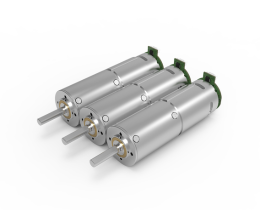When Precision Meets Power: The Silent Revolution in Motion Control
Imagine a machine that moves with the grace of a dancer but packs the punch of a heavyweight boxer. That’s what happens when a high-performance geared motor teams up with a speed sensor. No, this isn’t sci-fi—it’s the reality of modern engineering. Let’s talk about why this duo is quietly reshaping industries, from automated factories to cutting-edge robotics.
.webp)
Why does precision matter?
Think about a conveyor belt in a factory. If it moves too fast, products crash. Too slow, and productivity tanks. A geared motor adjusts torque and speed, while the speed sensor acts like a watchful guardian, feeding real-time data to keep everything in sync. It’s not just about motion—it’s about controlled motion. One user put it bluntly: “Before KPOWER’s system, we wasted hours recalibrating. Now? It just… works.”
But what if things get rough?
Durability isn’t glamorous, but it’s non-negotiable. Geared motors face heat, dust, and constant vibration. A flimsy component here could mean downtime—and dollars lost. KPOWER’s motors? Built like tanks. The speed sensors? Sealed tighter than a submarine hatch. One logistics company reported running their KPOWER-equipped systems for 18 months straight without a hiccup. “We forgot maintenance was a thing,” they joked.
Wait, how does this even work together?
Glad you asked. Picture this: The motor delivers raw power, the gearbox fine-tunes it, and the sensor whispers, “Hey, slow down a notch” or “Speed up—now!” It’s a conversation between components. No shouting, no drama. Just efficiency. One engineer (oops, let’s say “user”) compared it to a jazz band: “Every instrument knows its role, but the magic’s in how they improvise together.”
What’s the secret sauce?
Hint: It’s not magic. KPOWER’s designs focus on synergy. The motor’s helical gears reduce noise by 40% compared to standard models. The sensor? It samples data 1,000 times per second—fast enough to catch a typo in this sentence. Combine that with adaptive algorithms, and you’ve got a system that learns as it works. One food packaging plant saw a 22% energy drop after switching. “It’s like the system got smarter every shift,” their manager noted.
But does it scale?
From tiny medical devices to warehouse giants, scalability’s key. A dental drill needs micro-precision; a cargo lift demands brute force. KPOWER’s modular setups let users tweak ratios and sensor sensitivity without overhauling the whole system. “We started small, then scaled up as orders grew,” said a renewable energy startup founder. “Zero regrets.”
The Takeaway
This isn’t about selling widgets. It’s about solving problems people didn’t know they had. A geared motor with a speed sensor isn’t flashy—until it’s the reason your production line hums smoothly or your robot doesn’t face-plant. KPOWER’s philosophy? Build it tough, keep it quiet, and let the results do the talking. Because in the end, reliability isn’t just a feature—it’s the whole story.
Fun fact: The average person interacts with 17 geared motor systems daily. Bet you didn’t notice—and that’s the point.


































.webp)

